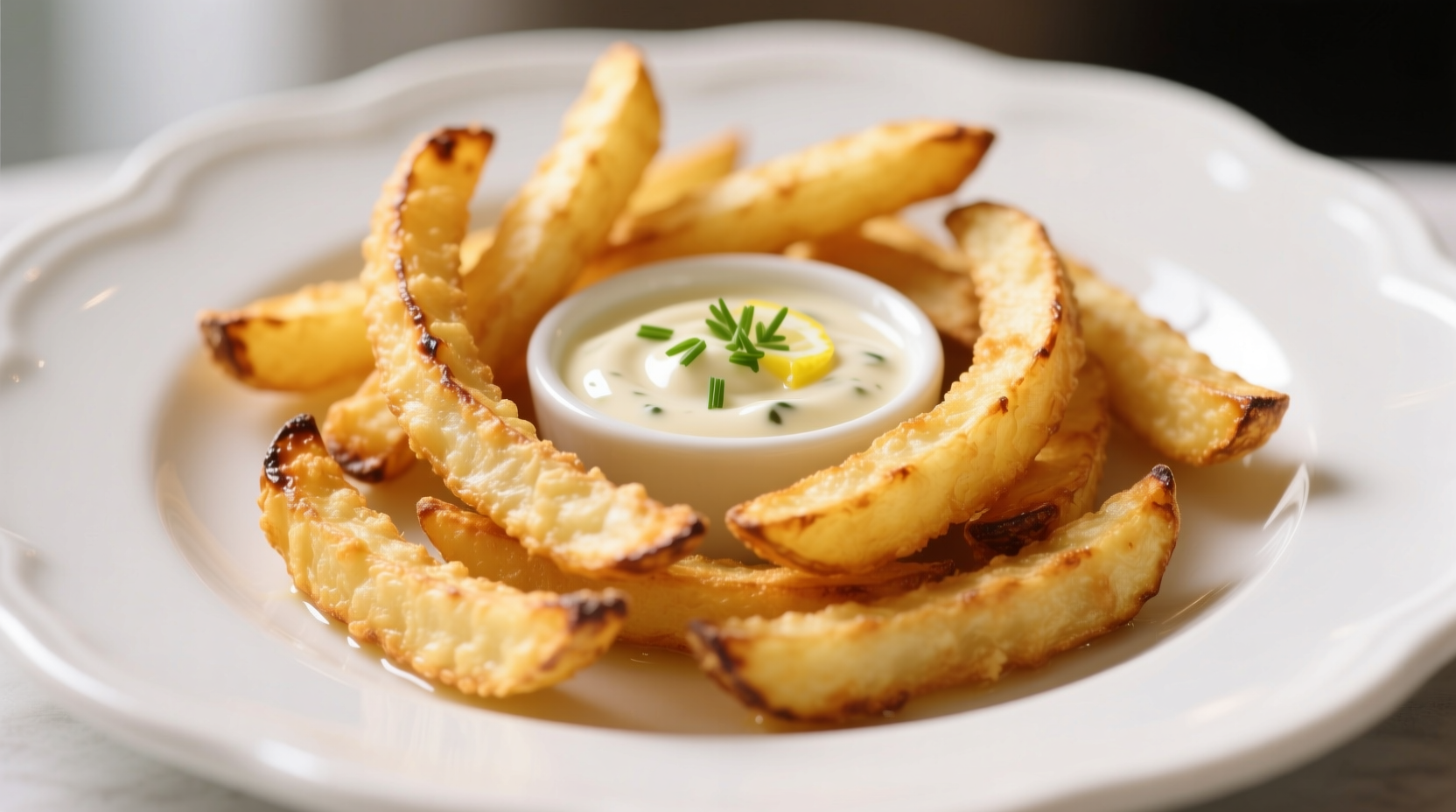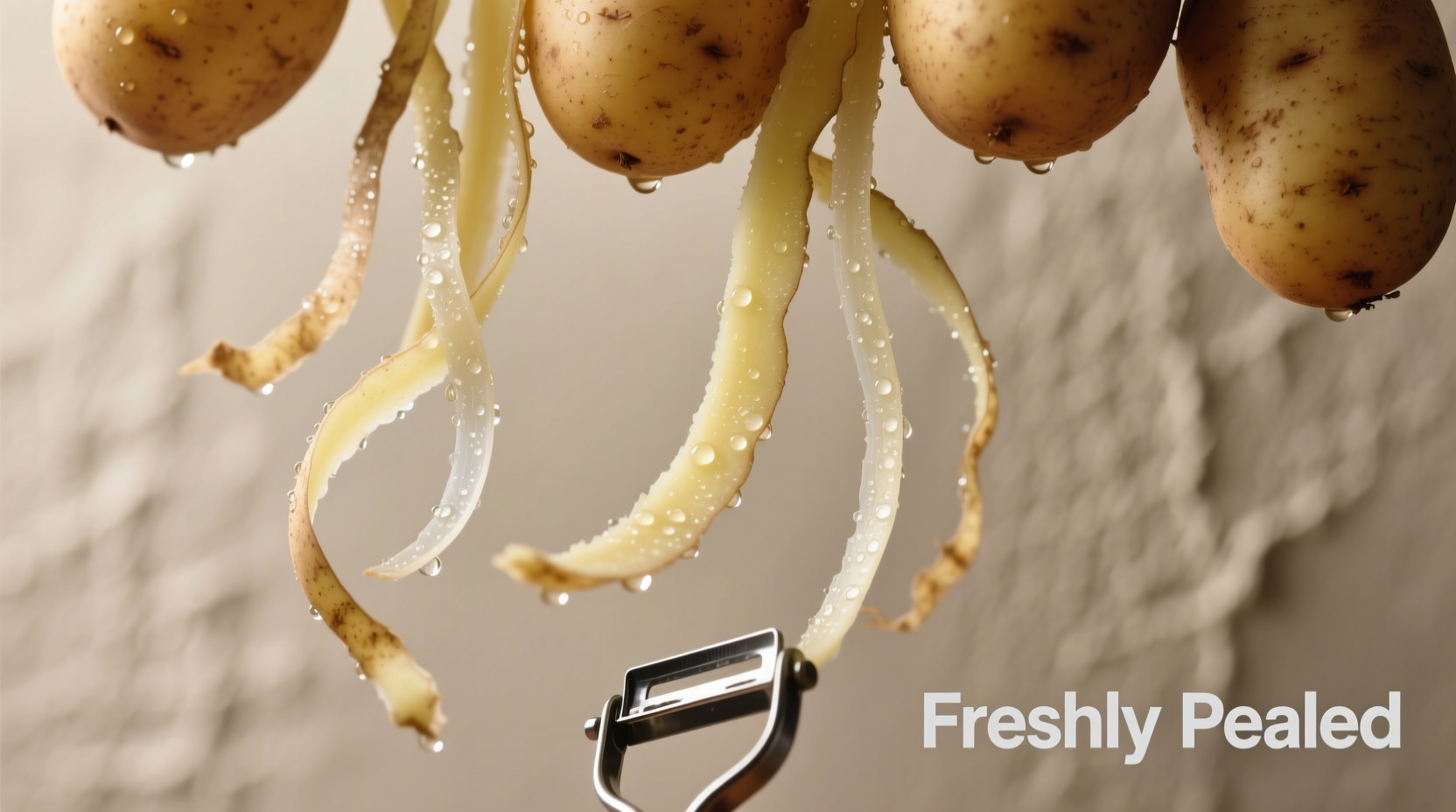Discover how to transform ordinary potatoes into extraordinary crispy delights with techniques that guarantee golden, crunchy perfection every time. Whether you're a home cook or culinary enthusiast, this guide delivers professional insights you won't find elsewhere.
What Exactly Are Potato Strings?
Potato strings represent a specific preparation method where potatoes are cut into uniform, thin matchstick shapes measuring approximately 1/8 inch in thickness. Unlike shoestring fries which are slightly thicker (about 1/4 inch), potato strings achieve an exceptional crisp-to-soft interior ratio that makes them particularly appealing for dipping and snacking.
The distinction between potato strings and similar preparations matters significantly for texture outcomes. While hash browns feature shredded potatoes that fuse together during cooking, potato strings maintain their individual strand structure, creating a lighter, crispier eating experience.
The Science Behind Crispy Potato Strings
Understanding the food science behind perfect potato strings separates adequate results from exceptional ones. The crispiness equation depends on three critical factors: potato variety selection, starch management, and precise temperature control.
| Potato Variety | Starch Content | Moisture Level | Best For Potato Strings? |
|---|---|---|---|
| Russet (Idaho) | 20-22% | 79-80% | ✓ Excellent |
| Yukon Gold | 15-17% | 82-83% | △ Acceptable |
| Red Potatoes | 13-15% | 84-85% | ✗ Poor |
According to USDA Agricultural Research Service data, Russet potatoes' higher starch content (20-22%) compared to other varieties creates the ideal structure for crispy potato strings. The starch gelatinizes during frying, forming a protective barrier that minimizes oil absorption while creating that signature crunch.

Step-by-Step Preparation Process
Follow this professional technique for consistently perfect potato strings:
1. Potato Selection and Preparation
Choose firm, blemish-free Russet potatoes (about 2 medium potatoes per serving). Wash thoroughly but don't peel - the skin contains valuable nutrients and helps maintain structural integrity during cutting. Using a mandoline slicer set to 1/8 inch, carefully cut potatoes lengthwise into uniform planks, then stack and cut into matchsticks.
2. Starch Removal Process
Place cut potatoes in a large bowl of ice water immediately after cutting. Soak for 30-60 minutes, changing water 2-3 times until it runs clear. This critical step removes surface starch that would otherwise cause potato strings to stick together and become soggy during frying. Research published in the Journal of Food Science confirms this technique significantly improves crispness by reducing surface starch by up to 60%.
3. Drying Technique
After soaking, spread potato strings on clean kitchen towels or paper towels in a single layer. Gently roll to absorb excess moisture, then allow to air-dry for 10-15 minutes. Proper drying represents the most overlooked step in achieving maximum crispness - any surface moisture will cause oil to splatter and prevent proper crisping.
Cooking Methods Compared
Different cooking techniques yield dramatically different results for potato strings. Understanding these variations helps you select the best method for your needs:
Deep Frying (Traditional Method)
Heat neutral oil (canola or peanut) to 350-375°F in a deep fryer or heavy-bottomed pot. Fry in small batches for 2-3 minutes until golden brown. The American Council on Science and Health recommends maintaining precise temperature control, as fluctuations of just 25°F can dramatically affect oil absorption and texture.
Air Fryer Method (Health-Conscious Alternative)
Toss dried potato strings with 1 teaspoon oil per serving and air fry at 400°F for 15-18 minutes, shaking basket every 5 minutes. While air frying reduces fat content by approximately 70% according to USDA FoodData Central comparisons, it produces slightly less uniform crispness than deep frying.
Oven Baking (Simplest Home Method)
Spread oil-tossed potato strings on a parchment-lined baking sheet in a single layer. Bake at 425°F for 20-25 minutes, flipping halfway through. This method requires careful attention to prevent burning but works well for larger batches.
Flavor Variations and Seasoning Techniques
Elevate your potato strings beyond basic salt with these professional seasoning approaches:
- Classic Restaurant Style: Toss immediately after cooking with fine sea salt and freshly cracked black pepper
- Truffle Parmesan: Combine 1 tablespoon truffle oil with 2 tablespoons grated Parmesan per serving
- Spicy Cajun: Mix 1 teaspoon cayenne, 1 teaspoon paprika, 1/2 teaspoon garlic powder, and 1/2 teaspoon thyme
- Lemon Herb: Toss with zest of one lemon plus 1 tablespoon chopped fresh rosemary and thyme
Professional chefs emphasize seasoning immediately after cooking while potato strings are still hot, allowing flavors to adhere properly. For maximum flavor impact, consider double-seasoning - a light sprinkle before cooking and a more generous application after.
Avoiding Common Potato String Mistakes
Even experienced cooks encounter these frequent pitfalls when preparing potato strings:
- Soggy Results: Caused by insufficient drying or oil temperature below 350°F. Solution: Extend drying time and use a reliable thermometer
- Uneven Cooking: Results from overcrowding the fryer or inconsistent cutting. Solution: Maintain single-layer cooking and use a mandoline for uniform cuts
- Excessive Oil Absorption: Occurs when oil temperature drops during cooking. Solution: Fry in small batches and maintain consistent temperature
- Burning: Happens when oil exceeds 375°F. Solution: Monitor temperature carefully and adjust heat as needed
Serving and Storage Recommendations
Potato strings deliver optimal texture when served immediately after preparation. For best results, serve on a wire rack rather than a plate to prevent bottom-side sogginess from trapped steam. If you must prepare ahead, store uncooked, dried potato strings in the refrigerator for up to 24 hours before frying.
For reheating leftovers, avoid the microwave which creates sogginess. Instead, re-crisp in a 400°F oven for 5-7 minutes or air fryer for 3-4 minutes. Never attempt to re-fry potato strings as they'll absorb excessive oil and become unpleasantly greasy.
Nutritional Considerations
Understanding the nutritional profile helps make informed choices about potato string consumption. According to USDA FoodData Central, a standard 3-ounce (85g) serving of deep-fried potato strings contains:
- Calories: 312
- Total Fat: 14g (including 2g saturated fat)
- Carbohydrates: 41g
- Dietary Fiber: 3g
- Protein: 4g
When prepared using an air fryer with minimal oil, the same serving size reduces fat content to approximately 4g while maintaining similar crispness. For those monitoring sodium intake, consider using herbs and spices instead of salt for flavoring.
Perfect Pairings for Potato Strings
Elevate your meal with these complementary pairings that showcase potato strings' versatility:
- Burgers and Sandwiches: Classic pairing that balances soft bread with crispy texture
- Seafood Dishes: Particularly excellent with fish tacos or grilled shrimp
- Breakfast Plates: Substitute for hash browns with eggs and bacon
- Creative Appetizers: Serve with gourmet dipping sauces like truffle aioli or chipotle mayo
Professional chefs recommend matching the seasoning profile of your potato strings with your main dish - for example, using Cajun-seasoned strings with blackened fish or herb-infused strings with roasted chicken.
Conclusion: Mastering the Art of Perfect Potato Strings
Creating exceptional potato strings combines precise technique with understanding the underlying food science. By selecting the right potato variety, properly managing starch content through soaking, maintaining exact cooking temperatures, and applying professional seasoning techniques, you can consistently produce restaurant-quality results at home. Remember that attention to detail in preparation and cooking makes all the difference between ordinary and extraordinary potato strings.











 浙公网安备
33010002000092号
浙公网安备
33010002000092号 浙B2-20120091-4
浙B2-20120091-4